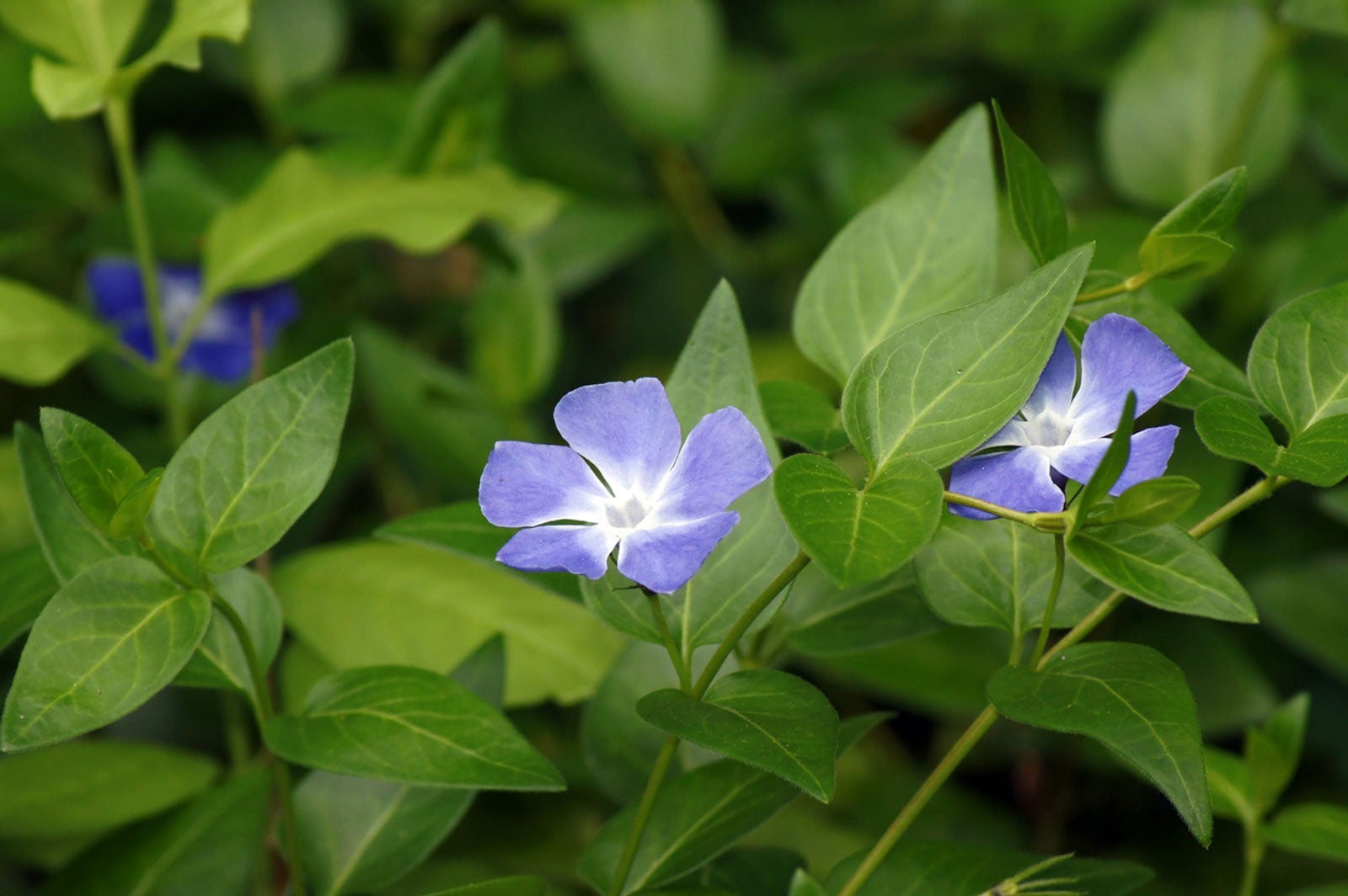How To Grow Periwinkle Or Vinca Minor
Periwinkle flowers can fill in as a pretty ground cover with bright purple-blue flowers, but it's important to be aware of the periwinkle’s invasive tendencies.

Periwinkle Care: How To Grow Periwinkle Plants
Periwinkle flowers (Vinca minor) are a low-growing, dense groundcover native to Europe and parts of Asia. Also known as common periwinkle, vinca, or creeping myrtle, it is invasive in some states but can be grown safely if contained. It is easy to grow in a variety of conditions and provides a pretty, flowering groundcover for a range of garden areas.
QUICK FACTS:
- Botanical name - Vinca minor
- Height - 3 to 6 inches (7.6 to 15.2 cm)
- Spread - 6 to 18 inches (15.2 to 45.72 cm)
- Sun exposure - Full sun to partial shade
- Soil requirements - Well-drained, moist, fertile
- Hardiness zones - 4 to 8
- When to plant - Spring to summer
Common Periwinkle Care
Periwinkle makes a popular groundcover for its attractive evergreen foliage, purple flowers, and low maintenance needs. It tolerates a variety of conditions and will spread quickly to fill a space. As a ground cover, periwinkle spreads by sending out roots from nodes on the stems.
The glossy, smooth leaves are dark green and maintain color through winter in most locations. Periwinkle flowers emerge in spring and sometimes again in fall. They are lavender to blue in color, tubular, and look similar to phlox.
Although they like full sun, periwinkle is commonly used as a shade groundcover. Vinca groundcover does well in a variety of conditions, including shady patches, although it will need moist, fertile soil to do well in deeper shade.
Water & Light Requirements
Vinca periwinkle can be grown in full sun, partial shade, and even in deeper shade. You might see some yellowing of leaves in full sun conditions without any relief throughout the day. Periwinkle has medium moisture needs. The soil should stay moist but can be allowed to dry out. It will not do well in soggy soil or standing water.
Soil & Fertilizer Needs
Sign up for the Gardening Know How newsletter today and receive a free copy of our e-book "How to Grow Delicious Tomatoes".
The best soil is fertile and well-drained, especially if planting periwinkle in shadier areas. If you have plenty of organic matter in the soil, it generally doesn't need fertilizer. If necessary, use a balanced fertilizer in spring.
Problems, Pests & Diseases
There are no major pests of periwinkle, but it can be affected by stem cankers. These are by fungal infections and look like sunken lesions on the ground. Prevent cankers by avoiding overhead watering and overwatering. Remove damaged vinca stems as you see cankers.
Using Periwinkle as a Groundcover
This is by far the most popular use for periwinkle. Since it tolerates shade, many gardeners use it in areas where grass grows poorly or in patches. It spreads rapidly and grows in dense, trailing mats. To cover a small area quickly, space plants about eight inches (20 cm) apart. For a larger area, you can allow some more space for the ground cover to fill in.
Although it forms a dense cover, you will need to weed the area regularly to keep it looking tidy. Consider adding bulbs with periwinkle ground cover for additional spring color. You do not have to prune periwinkle, but it will look less weedy and leggy if you trim it back every couple of years.
Is Periwinkle Invasive?
Periwinkle plants are invasive in many states. Check with your local extension office to find out if it is listed in your area. It is not nearly as aggressive as some invasive species, so it is possible to enjoy it as a ground cover with care.
Avoid planting vinca minor ground cover near natural areas, such as meadows or woodlands. Plant it in areas bounded by concrete, walls, or turf grass to help keep it contained.
Vinca minor is an attractive, easy groundcover, even in shade. Just take care to keep it in line and avoid growing near areas where it could become invasive.
Common Periwinkle Varieties
You can find a few different cultivars of common periwinkle with differences in foliage and flowers:
- 24 Carat. This cultivar has leaves that are golden in color when young.
- Alba Alba is a periwinkle with pure white flowers.
- Alboplena. Alboplena has double white flowers.
- Flore Pleno. This cultivar has double purple flowers.
- Variegata. Choose this variety for leaves with yellow variegation.
- Honeydew. This cultivar has striking chartreuse foliage.

Mary Ellen Ellis has been gardening for over 20 years. With degrees in Chemistry and Biology, Mary Ellen's specialties are flowers, native plants, and herbs.

